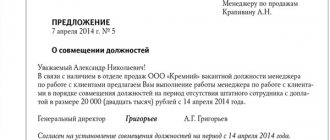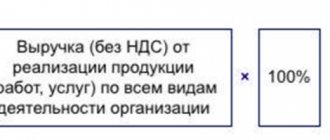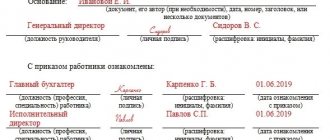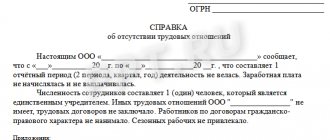Special tax systems are designed to make life easier for certain types of business activities. A common practice is to combine SNA to maximize the optimization of the tax burden, i.e. if there are several types of activities, choose the most favorable tax regime for a specific type of activity.
Since UTII will be canceled with the onset of 2021, it will not be possible to use the previous combinations of SNO.
In this article, we will consider who, how and under what conditions will be able to combine tax regimes in 2021, as well as how to do this effectively.
What and how you can combine in 2021
After canceling UTII, there are only 4 special modes to choose from:
- STS (simplified taxation system);
- PSN (patent taxation system);
- Unified Agricultural Tax (Unified Agricultural Tax);
- NPI (professional income tax).
It is prohibited to combine the simplified tax system and the operating tax system. The reason is that SNO data applies to the entire business, and not to individual registered activities.
As for SNO for the self-employed (NSE), no combinations are provided for this option.
This leaves only two options: OSN or simplified tax system with a patent.
And due to the fact that PSN can only be used by individual entrepreneurs from the micro-business category, only they will have the opportunity to combine SNO in 2021.
There is also the possibility of using a patent with the Unified Agricultural Tax, but this option is much less common than the simplified tax system + PSN, which will be discussed in more detail later.
What are the advantages of simultaneous use
How to switch from individual entrepreneur to self-employment or combine them at the same time
The simplified tax system based on a patent implies the need to maintain an income ledger. Its form, rules, and procedure for filling out are regulated by the norms of Order of the Ministry of Finance of the Russian Federation No. 135n of October 2012. It is for this reason that income is determined using the Book.
If individual entrepreneurs have expenses, it becomes necessary to determine the share. It is necessary to determine exactly how much income was received on a cumulative basis using the simplified approach and the amount on the patent, after which the portion of the costs when working with the simplified approach is determined.
Disadvantages of using a patent
Important : using a patent does not incur costs, which is why they are not taken into account.
The combination of a patent and the simplified tax system has the main advantage - a low level of control on the part of government bodies. Basic minutes indicates the need to keep separate records.
The simplified tax system and the patent taxation system require mandatory payment of contributions. Many entrepreneurs are trying their best to reduce their size in the Pension Fund and other funds, but this will bring nothing but disappointment.
The only possible way out is considered to be the right to a deduction under the cash register, which in 2021 is 18 thousand rubles. for each individual cash register. The right is reserved for individual entrepreneurs on the simplified tax system and on the PSN, including on UTII.
Income limit
According to paragraph 6 of Art. 346.45 of the Tax Code of the Russian Federation, the limit on annual revenue should not exceed 60 million rubles if an individual entrepreneur wants to combine the simplified tax system and the PSN.
Exceeding this value leads to the loss of the opportunity to use the patent from the beginning of the tax period. If the established limit is exceeded, the individual entrepreneur loses the right to apply the patent from the beginning of the tax period.
The tax period is equal to the validity period of the patent. The validity period of a patent can be 1 – 12 months.
If an individual entrepreneur has several patents received during the year, he loses the right to apply PSN for the type of activity for which the income limit was exceeded. Consequently, in this area, the individual entrepreneur will switch to the simplified tax system from the beginning of the tax period
The individual entrepreneur received two patents:
- from February 1 to July 30;
- from August 1 to December 31.
In September, the entrepreneur exceeded the limit (60 million rubles) cumulatively since the beginning of the year. Despite the fact that the excess was in September, the transition to the simplified tax system due to the excess will be counted from August, i.e. from the beginning of the second patent.
This means that the individual entrepreneur must re-calculate the tax base from August 1, take into account income and, if necessary, expenses that were incurred after August 1 under the patent (letter of the Ministry of Finance dated August 7, 2019 No. 03-11-11/ 59523).
General information about simplified taxation system and PSN and quantitative restrictions for their use
Simplified and patent taxation systems (STS and PSN) belong to special tax regimes.
Switching to them allows you to significantly save on payments to the budget and reduce the number of reporting forms. Under both special regimes, three taxes (personal income tax, VAT and property tax) are replaced by one special one.
The legislation does not prohibit combining the simplified tax system and the PSN if the specifics of the businessman’s activities allow him to work in both modes.
Limitations on the scale of business for the use of special modes overlap in many ways.
| Restriction type | simplified tax system | PSN | Combination |
| Revenue | 150 million rub. | 60 million rub. | 60 million rub. (summed across both modes) |
| Number | 100 people | 15 people | 100 people (including no more than 15 people for patent activities) |
| Residual value of fixed assets | 100 million rub. | Not limited | 100 million rub. |
The table shows that if the simplified tax system is aimed at small-scale businesses, then the PSN is more of a micro-business.
In addition to quantitative ones, the combination of PSN and simplified taxation is associated with other restrictions. Let's look at them.
Average headcount
This restriction does not have a completely unambiguous interpretation due to the fact that the letter of the Ministry of Finance (letter of the Ministry of Finance dated September 20, 2018 No. 03-11-12/67188) states that the number of employees can be kept separately. Hence the question - how many employees can you hire when combining the simplified tax system and the PSN: 130 or 145?
130 people can be hired by combining the simplified tax system and the PSN.
The basis for this is clause 5 of Art. 346.43 of the Tax Code of the Russian Federation, which establishes that a patent can only have 15 employees.
The limit on the number of employees in the simplified tax system is 130 people and it applies to the entire legal entity or individual entrepreneur, and not to a separate type of activity. (Clause 15, Clause 3, Article 346.12 of the Tax Code of the Russian Federation)
Thus, the situation is as follows - when combining the simplified tax system and the PSN, you can hire a total of no more than 130 people, of which no more than 15 people can work for the PSN, while no one prohibits keeping their records separately.
The individual entrepreneur has a wholesale and retail store, in which the same employee records goods.
The letter of the Ministry of Finance of the Russian Federation dated 07/02/2013 No. 03-11-06/3/25138 indicates the need to take into account such employees also in the combined SNO, in this case PSN.
Thus, care should be taken to ensure that the total number of employees participating in the PSN does not exceed 15 people.
Cases when the patent tax system can be combined with the simplified tax system
The scope of application of the simplified tax system is regulated by clause 3 of Art. 346.12 of the Tax Code of the Russian Federation, which provides a list of types of activities that are not subject to the simplified taxation system. For types of activities not included in the specified list, the use of the simplified tax system is possible, but subject to restrictions on revenue and the number of employees.
The scope of application of the PSN, on the contrary, is represented by a list of activities for which it is permitted (clause 2 of Article 346.43 of the Tax Code of the Russian Federation). This list can be supplemented with additional types of activities on the basis of legislative acts adopted by the constituent entities of the Russian Federation (subclause 2, clause 8, article 346.43). Therefore, when planning the transition to the PSN for certain types of activities, you should familiarize yourself not only with the list from the Tax Code of the Russian Federation, but also with the additional list of the region in which business activities are carried out.
ATTENTION! Starting from 2021, PSN cannot be used when selling goods that are not related to retail trade. And labeled drugs cannot be sold even within the framework of medical and pharmaceutical activities. Read more here.
Example
IP Maksimov M. M. is engaged in 2 types of activities in one city:
1) retails various pet products through a stationary store with a sales area of 100 sq. m;
2) provides veterinary services.
Revenue from all types of activities for the previous tax period amounted to 10 million rubles. There are 25 employees on staff, including 5 people at the veterinary point.
Individual entrepreneur Maksimov M. M. has the right to apply the simplified tax system for all types of activities. The transition to PSN is possible only for the type of activity specified in paragraph 2 of our list. For the activities specified in clause 1, the transition to PSN is impossible due to exceeding the permissible limit of retail space of 50 sq. m. m and the permissible number of employees according to PSN.
Individual entrepreneur Maksimov M. M., taking into account the listed conditions, has the right to combine the simplified tax system for the activities specified in clause 1 of the list with the PSN for the activities specified in clause 2.
Residual value of fixed assets
According to this, the Ministry of Finance and the tax authorities have a similar position; the residual value of fixed assets should not exceed 150 million rubles.
Also, in its letter dated 03/06/2019 No. 03-11-11/14646, the Ministry of Finance indicated that only funds that are included in the simplified tax system should be taken into account.
But Article 346.12 of the Tax Code of the Russian Federation does not clearly define this limitation. In addition, based on paragraph 4 of Art. 346.12 of the Tax Code of the Russian Federation, previously, when combining the simplified tax system and UTII, the residual value of fixed assets was determined for the entire enterprise, and not just according to the simplified tax system.
Therefore, in this matter, it is also worth adhering to the established limit, because otherwise, there is a risk of losing the opportunity to use the PSN.
What is better for an individual entrepreneur - a patent or the simplified tax system?
It is impossible to unequivocally answer the question of what is better for an individual entrepreneur—a patent or a simplified version.
Each tax system has advantages and disadvantages. For some types of activities it is preferable to use the PSN, and for some the simplified tax system - much depends on the volume of incoming income and spent funds. In addition, for both the PSN and the simplified tax system, the Tax Code defines strict restrictions, beyond which it is impossible to further apply the selected regime. Let us briefly describe these two tax systems.
simplified tax system
The application of this tax regime, presented in Chap. 26.2 of the Tax Code of the Russian Federation, is provided in two versions:
- With the object “income”, when a business entity keeps tax records of incoming income, the value of which, calculated for the year, is the tax base. The tax rate is 6%, but it can be reduced by regional legislation.
- With the object “income minus expenses”, when it is necessary to keep tax records of both income and expenses. The difference between these two values acts as the tax base. The rate is 15%, but it can also be reduced by the laws of the constituent entities of the Russian Federation.
In general, the simplified tax system is applicable to most types of activities. Exceptions are listed in paragraph 3 of Art. 346.12 of the Tax Code of the Russian Federation (banks, pawnshops, insurers, etc.).
Restrictions for the simplified tax system are presented as:
- average number of employees - no more than 100 people per year;
- income amount: 150 million rubles. per year - for an entity already using the simplified procedure, and 112.5 million rubles. in 9 months - for those planning to switch to it next year.
Organizations are subject to restrictions on the share of participation in their authorized capital of other companies.
The declaration with the single tax calculated for the tax period is submitted by the simplifier once a year, advances are paid quarterly.
You can combine the simplified tax system with UTII and a patent. It is impossible to apply the simplification at the same time either with the general regime or with the Unified Agricultural Tax.
PSN
This mode, described in Chap. 26.5 of the Tax Code, loved by individual entrepreneurs - and it is provided exclusively for them; organizations do not use the PSN - because it does not contain reporting on the main tax. Payment for the period of validity of the patent is calculated by tax inspectors, which eliminates errors on the part of taxpayers. The latter are obliged to promptly transfer the amount of the patent to the state treasury; delay threatens the accrual of fines and penalties.
The tax liability is calculated based on the potential income established at the level of the constituent entities of the Russian Federation. The tax rate is 6%, but regions have the right to reduce it.
Regime restrictions apply to:
- volume of income - for the year, revenue should not exceed the limit of 60 million rubles, adjusted for the deflationary coefficient;
- types of activities - their full list is given in paragraph 2 of Art. 346.43 of the Tax Code of the Russian Federation, however, regional authorities have the right to supplement it;
- the area of the premises used in carrying out certain types of activities;
- number of employees - no more than 15 people.
A patent can be used together with the OSN, simplified tax system, and UTII if the entrepreneur conducts business in several directions at once.
Comparative analysis of systems
From the description of tax regimes it is clear that activities on the simplified tax system can be carried out on a much larger scale than activities on the special tax system. This applies to both employees and the amount of annual income. And not every type of activity can be applied to PSN. That is, the scope of application of the patent is significantly narrower compared to the simplified one. However, an entrepreneur on a PSN does not have the obligation to submit a declaration and calculate tax. The tax is calculated by the tax service, and payment is made according to receipts issued by it. Thus, an entrepreneur with a patent is initially exempt from fines for late submission of a declaration and non-payment (incomplete payment of tax) as a result of understating the tax base.
NOTE! For individual entrepreneurs on a patent or simplified tax system, tax holidays are provided in the form of a zero rate for these taxes.
Combination of tax regimes for one type of activity in one region
The next restriction is the ban on conducting activities on two aids to taxation (STS and PSN) in the same region for the same type of activity.
This prohibition is described in the letter of the Federal Tax Service of the Russian Federation dated March 28, 2013 No. ED-3-3/1116. This is justified by the fact that the patent is valid within the region as a whole and is not limited to any object or objects.
There is also a letter from the Ministry of Finance dated 04/05/2013 No. 03-11-10/11254, in which the position is the opposite, i.e. the use of simplified taxation system and PSN in one region within one region at different facilities is permitted.
As a result, here is another “slippery” situation in which everything will depend on how the above documents are interpreted, so before applying for a patent, it is worth getting clarification on this issue from your Federal Tax Service.
If for the same type of activity the PNS is used for one object and the simplified tax system for another, but they are located in different regions, then you do not violate any restrictions.
Potential income exceeds actual
Let’s say the potential annual income of an individual entrepreneur under a patent is 400,000 rubles. What to do with the accrual of an additional contribution to pension insurance in the amount of 1% on the amount of potential income exceeding 300,000 rubles, if the real annual income according to the taxpayer was 200,000 rubles?
In this case, as in the previous one, the basis for calculating the additional contribution to pension insurance is potential income, which, according to the condition, is equal to 400,000 rubles. An individual entrepreneur is obliged to pay, together with the amount of a fixed contribution and 1% of 400,000 - 300,000 = 100,000 rubles in the amount of 1,000 rubles.
Reducing the cost of a patent for insurance premiums from 2021
How to keep records when combining PSN and simplified tax system
Accounting should be kept separately, namely:
- income and expenses;
- property;
- obligations;
- business transactions.
Accounting for income and expenses when combining simplified taxation system and PSN
As for the distribution of income, the question most often arises of how to distribute non-operating income. Such income cannot be confidently attributed to any one of the combined activities.
In such cases, the point of view of the Ministry of Finance is that this type of income cannot be distributed between combined SNOs.
The Federal Tax Service believes that income from such a plan should be taken into account in full in calculations for the simplified tax system.
An example of such income is the sale of a fixed asset (letter of the Ministry of Finance dated January 29, 2016 No. 03-11-09/4088).
Expenses that relate to the business as a whole, for example, office rent, accountant's salary and the like, must be distributed proportionally between both types of activities.
This requirement is described in paragraph 8 of Art. 346.18 Tax Code of the Russian Federation.
The individual entrepreneur combines the simplified tax system “income minus expenses” and a patent. To distribute expenses, he uses the revenue “on payment” received on an accrual basis from the beginning of the year. The indicators for the first quarter of 2021 are as follows:
revenue from the simplified tax system - 7 million rubles;
revenue from PSN - 3 million rubles;
expenses for distribution (salary of an accountant, logistics specialist and office rent) - 500 thousand rubles.
Calculation
Total revenue for the 1st quarter: 7 + 3 = 10 million rubles.
Share of revenue on the simplified tax system in the total amount: 7 / 10 = 70%.
The amount of distributed costs that will be taken into account when calculating the simplified tax for the first quarter of 2021: 500 × 70% = 350 thousand rubles.
Unfortunately, the Tax Code of the Russian Federation does not have a clear rule by which this proportion is drawn up. It is not indicated, for example, what type of revenue accounting to use: by shipment or by payment.
In the case of combining the simplified tax system and UTII, by letter of the Ministry of Finance dated September 29, 2009 No. 03-11-06/3/239, it was agreed to use revenue accounting “by shipment”.
However, PSN differs from UTII in this regard. When working on a patent, accounting occurs in the same way as in the simplified tax system, i.e. upon payment.
For expenses, the cash method is used similarly. In addition, in the above letter the requirement to keep records was presented for legal entities, and not for individual entrepreneurs.
The next question that arises is which billing period to use to calculate the proportion. The problem is that for the simplified tax system the tax period is equal to one calendar year. While a patent can be issued for a month or two, up to 1 year.
It is worth noting that for combining the simplified tax system and the PSN, the procedure for determining the billing period is not described. However, when combining the simplified tax system and UTII, the Federal Tax Service recommended keeping records on a monthly basis, cumulatively from the beginning of the year (letter of the Ministry of Finance of the Russian Federation dated March 29, 2013 No. 03-11-11/121).
Thus, there are two ways out of this situation: act by analogy with the scheme for the simplified tax system + UTII, or develop and consolidate your own calculation scheme in the accounting policy.
Deductions for insurance premiums
Write-off of expenses that form the tax base is applied only under the simplified tax system “income minus expenses.” If the “income” object is used, expenses do not affect the tax calculation. However, some types of costs allow you to reduce the total amount payable to the budget. We are talking about tax deductions provided for in paragraph 3.1 of Art. 346.21 Tax Code of the Russian Federation. The largest and most common of them are deductions for insurance premiums from the payroll fund.
The approach here is the same as for cost allocation. Only contributions related to employees engaged in activities subject to the simplified tax system can be used as a deduction. The patent system does not, in principle, provide for tax deductions related to personnel costs. All payments for employees employed in the “patent” part of the business do not affect the amount of tax in any way.
In addition, an individual entrepreneur with hired employees has the right to reduce the simplified tax through contributions by no more than half (paragraph 4, clause 3.1, article 346.21 of the Tax Code of the Russian Federation).
An interesting situation arises if the entrepreneur himself is engaged in activities subject to the simplified tax system, and all his employees are employed in the “patent” component of the business. It turns out that in terms of the simplified tax system, the entrepreneur is not an employer. And the Tax Code of the Russian Federation allows such individual entrepreneurs to deduct insurance premiums for themselves in full from the simplified tax.
The letter of the Ministry of Finance of the Russian Federation dated May 25, 2016 No. 03-11-11/29929 discusses a similar case. True, as an additional special regime there appears a single tax on imputed income (UTII). But in this context, UTII and PSN are very similar. Both of these modes involve calculating tax without taking into account the actual revenue and expenses of the businessman. As a result, experts from the Ministry of Finance came to the conclusion that such an individual entrepreneur can deduct contributions for himself without restrictions.








